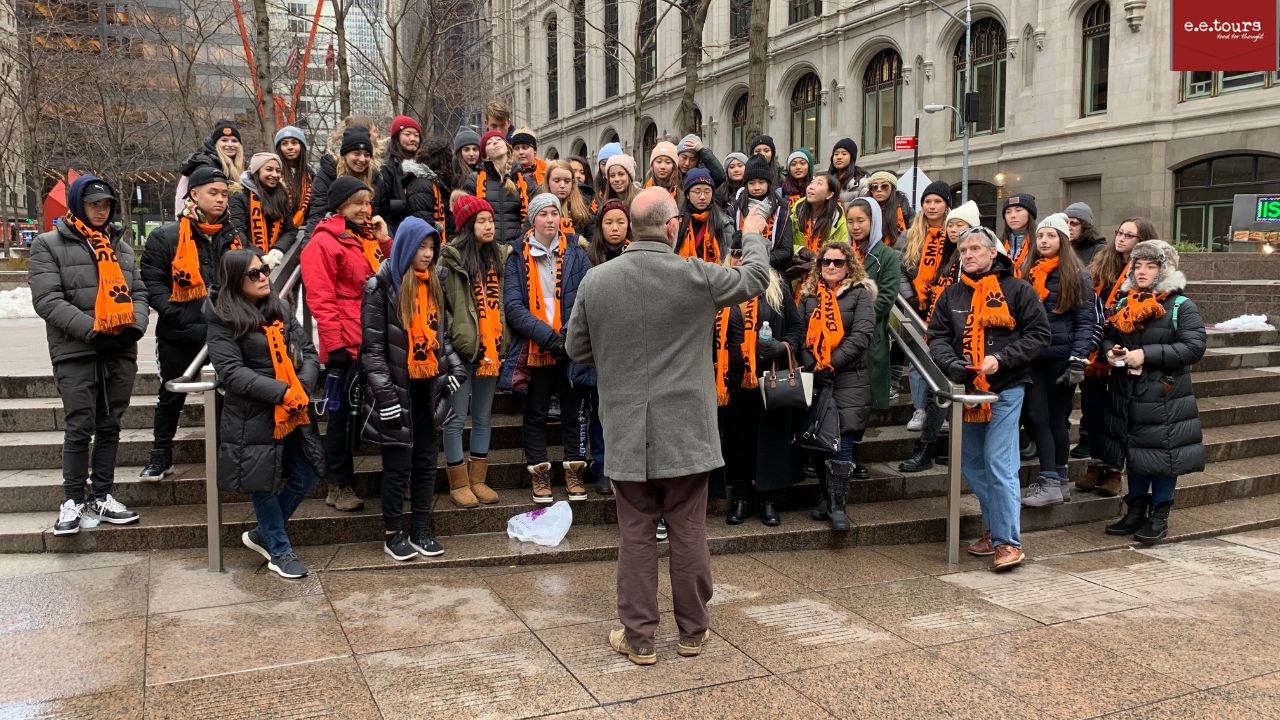Is $1000 Enough for 4 Days in New York? Budget Breakdown for Group Travelers
Is $1000 enough for 4 days in New York? That’s the question many group travelers ask when planning their trip. New York City is exciting, but it’s also one of the most expensive cities in the United States.
For first-time visitors, determining whether this budget works can be confusing.
Costs vary widely depending on where you stay, how you move around, and what you choose to do.
A clear breakdown of major expenses makes it easier to know if $1000 will cover your trip or if you need to plan for more.
Why Is Budgeting Crucial in NYC?

New York has endless things to see and do, but everything comes with a price. Hotels, meals, and even transportation can add up quickly. Without a budget plan, group travelers can run out of money faster than expected.
Having a clear idea of costs gives you control and helps you avoid last-minute surprises, especially with customized group tours that plan your NYC itinerary for you.
Key Expenses to Consider
Breaking down expenses is the simplest way to check if $1000 fits your needs.
Every traveler has different priorities, but most costs fall into five main categories:
- Accommodation
- Transportation
- Food and Drinks
- Attractions and Activities
- Extras and Unexpected Costs
Looking at each of these helps you understand where money goes and how much flexibility you’ll have during the trip.
Accommodation Costs
Hotels in New York vary from budget to luxury. Even budget hotels or shared stays can be costly compared to other cities. Accommodation will usually take the largest portion of a group’s budget.
Things to keep in mind:
- Staying in central neighborhoods costs more but saves time on travel.
- Booking early can lower prices, and group travel planning services can help secure affordable accommodations for your group.
- Group travelers may cut costs by sharing rooms.
Expect accommodation to consume at least 40–50% of your $1000 budget. That leaves less room for other activities, so planning ahead is key.
Transportation Costs
Getting around New York is easier with the subway, buses, or walking. Taxis and ride-hailing apps cost much more and can quickly eat into your budget.
For group travelers, subway passes are usually the most practical choice. A 7-day unlimited MetroCard gives you unlimited rides for a fixed price, making travel simple and predictable. If you plan to take taxis occasionally, add those expenses to your budget as well.
Food and Drinks Costs
Meals can be another big expense. Dining options range from fast food to fine dining, and the price difference is huge. Group travelers often spend more when eating out for every meal.
To manage food costs:
- Mix sit-down meals with quick and affordable options, or explore authentic dining with culinary tours of NYC to enjoy budget-friendly local flavors.
- Set aside money for at least one or two nicer meals during the trip.
- Remember to budget for drinks, snacks, and coffee, which add up quickly.
On average, food and drinks can take 20–25% of your total budget.
Attractions and Activities
Most visitors come to New York with a list of must-see attractions. Admission fees vary depending on where you go. Some places are free or donation-based, but others require higher entry fees.
Plan this portion of your budget carefully:
- Prioritize the attractions that matter most to your group.
- Look into bundled passes for multiple attractions.
- Set a daily activity budget to avoid overspending.
Attractions and activities often take up another 20–25% of a group traveler’s budget.
Extras and Unexpected Costs
Even with careful planning, there will be extra costs. This might include souvenirs, last-minute activities, or small purchases along the way. These are easy to overlook but can put stress on a tight budget.
A good rule is to leave at least 5–10% of your budget for these extras. That way, you’re prepared for small surprises without worrying about running short on cash.
Group Travel Budgeting Tips

When traveling as a group, costs can feel more complicated. Not everyone spends the same, and balancing different needs can be tricky. These tips can help:
- Agree on a daily budget for shared activities.
- Split accommodation evenly so everyone knows their share.
- Decide in advance how to handle food costs—whether splitting meals or paying individually.
- Use group passes when available to lower attraction and transport costs, or let educational group tours handle logistics for a cost-effective cultural experience.
Clear communication ensures no one feels pressured or left out.
Can $1000 Work for 4 Days?
The short answer: yes, but it depends on your choices. If you manage accommodation wisely, stick to affordable food options, and plan attractions carefully, $1000 can be enough for a 4-day trip. But if you lean toward more expensive hotels, taxis, and higher-end meals, the budget will not stretch far.
Here’s a rough breakdown of how group travelers might allocate $1000:
- Accommodation: $400–500
- Transportation: $35–50 (with a subway pass, plus extras)
- Food and Drinks: $200–250
- Attractions and Activities: $200–250
- Extras: $50–100
This breakdown leaves little room for unexpected luxury spending, but it can cover the basics for most first-time visitors.
Final Thoughts
A trip to New York City doesn’t have to break the bank, but budgeting is essential. Is $1000 enough for 4 days in New York? It can be, if group travelers plan carefully and make thoughtful choices about where to stay, what to eat, and which attractions to visit. For those who want more flexibility or higher comfort, a larger budget may be necessary. The key is knowing your priorities before you arrive so you can enjoy your trip without worrying about money.